First-time visitors, please start here for the general perspective taken throughout my writings.

Tendinopathy, A Mechanical Problem With a Metabolic Root
New section added. On the benefits of alive over dead sinews. It's an exploration of the workings of tendinopathy, and how measures of metabolic health can predict both incidence and morbidity for the common complaint of the painful tendon ...
Read More
Read More

The Ecology of Over-Nutrition
New section added. How excessive prosperity alienates friends and attract enemies. It's an attempt at putting the mechanisms driving metabolic disease into ecological context, and explain why excess accumulation of nutrients presents a different kind of problem to our body than what was originally thought. It is a follow-up to the previous section which focused on the paradoxical fact that nutrient-absorption seems to ...
Read More
Read More

What Happens When You Inhibit Intestinal Fat-Absorption?
Section update. Is serum nutrient-overflow and obesity really whats driving metabolic disease? A couple of very recent studies shows rather paradoxical findings from the conventional point of view, that inhibiting intestinal absorption of fat cause a radical decline in measures of metabolic health both on a standard diet and on a high-fat diet, and that it also increases neurological co-morbidity in pre-existing diabetes ...
Read More
Read More

On Metformin, Plants and Diabetes
Section update. The anti-hyperglycaemic drug metformin actually increase intestinal glucose-absorption from the diet and elevate the glycolytic rate of enterocytes. This is originally a tactic devised by plants to avoid predation by herbivores. The result is an increase in energy-waste followed by activation of energy- and glucose-sparing strategies at a systemic level in diabetic patients such as decreased hepatic gluconeogenesis which in turn ...
Read More
Read More

Similar Gastrointestinal Adaptations in Semi-Starvation and Metabolic Disease
Section update. The body actively tries to enhance rather than limit nutrient-absorption in metabolic disease. Strangely this is also something that occurs as a response to partial starvation and hence it seems very counter-intuitive from the perspective that these diseases are caused by systemic nutrient-overload ...
Read More
Read More

A Fatal Flaw in the Nutrient-Toxicity Model of Dietetics?
New section added. Ingested nutrients are not passively absorbed, but actively and consciously imported through tightly regulated processes that also use stored energy and nitrogen. This section is the first part of an explanation as to how diet is related to disease, and we start by deconstructing a potentially false axiom that underlies practically all schools of diet which is the notion that ...
Read More
Read More

An Unrecognised Paradox in Nutrition
New chapter added. How can nutrient make us ill? This is commonly explained by applying a principle of toxicology which states that "the dose makes the poison", and even though this is true in a purely practical sense, that if we get too much of something good it can have bad consequences, it is a gross over-simplification in terms of the actual mechanisms ...
Read More
Read More
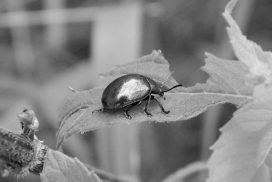
The Biological “Raison d’Être” of Vertebrate Joints and Osteoarthritis
New section added. Four out of every five species of animals seams to have figured out how to avoid premature ageing of their joints, so why haven’t we? This section is still not finished and hence locked to the public. If you want to read this first draft, send me a message and I'll give you an early-access-code ...
Read More
Read More

Added Charts and Figures
I've started to create graphic material to accompany the mechanistic explanations in the Histopathology-chapter. As with everything els in the book, they are a continual work-in-progress and as usual I gladly accept feedback on interpretability as well as potential factual errors ...
Read More
Read More

Gout in a Larger Perspective, and a Peek Into the Complex Nature of Fruits
New section added. Its a short follow-up on the idea of gout being a side-effect of microbial nitrogen acquisition, and how this might be related to the evolution of fruit-production in plants. Perhaps it might also part of the reason as to why we tend to over-eat on fructose-rich foods. Image by TheOtherKev from Pixabay ...
Read More
Read More
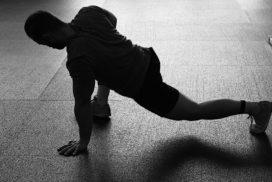
How Muscular Flexibility Might Predict Blood-Pressure
Is it possible that the same mechanism that causes arteries harden in atherosclerosis is also causing the phenomenon of common muscle-stiffness? A study suggest that this might be the case. The study showed that the result of a basic trunk-flexibility test had positive relationship with arterial elasticity in middle-aged adults, meaning that the lower the flexibility-score, the stiffer the arteries which implies a ...
Read More
Read More

A Common Root of Pathology
New section added. A short summary of my hypothesis on the origins and pathophysiology of musculoskeletal disease. It is an overview of the core mechanistic interplay that is further outlined in the rest of the Model-chapter. Secondarily, it is also an attempt at a unified explanation of inflammatory and degenerative pathology. Cover-photo by Lucas Van Oort ...
Read More
Read More

In Defense of Destructive Inflammation
New section added. Inflammation is a term that many use, but very few actually understand. Because of its endogenous origin and near universal association with disease, it is tempting to jump to reductionistic conclusions that makes the human body look really dumb. Why is it that the body seems to inflict self-harm in response to inflammatory triggers, how is that related to chronic disease, ...
Read More
Read More
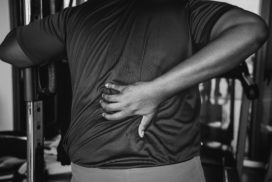
Epidural Lipomatosis – Why some Hernias Hurt more than Others
It has been known for long that a large part of the population have asymptomatic disc-herniations, but why is it that in some cases even minor herniations can cause severe pain? A partial explanation for this is a phenomenon known as spinal epidural lipomatosis (SEL), which is a state where fat gets deposited around the outer sheet of the spinal-cord. This decreases the ...
Read More
Read More
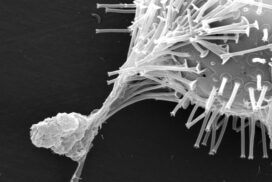
The Role of Microbes in Health and Disease
New section added. How do we resolve the paradox of microbes being essential for health while at the same time also being the factor that causes or modifies disease-progression in both communicable and non-communicable disease? ...
Read More
Read More

An Ecological Perspective on Pathology
New section added. Can ecological principles make sense of the "why" in chronic disease? In this section I lay out the foundation for my main-hypothesis and a perspective on what I believe disease truly represents ...
Read More
Read More
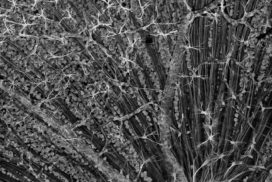
Histopathological Similarities in Musculoskeletal Disease
New chapter added. Histopathology. It covers key signs and mechanisms at the cell/tissue-level of musculoskeletal disease, and is an attempt to make a case that we are dealing with conditions that might simply be expressions of the same problem in different tissues. Then, by clarifying the individual nature and purpose of these shared signs and mechanisms, I hope to shine light on whats ...
Read More
Read More
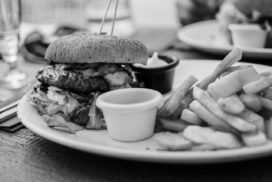
Diet Is an Independent Causal Variable in Osteoarthritis
A 2016 study by A.Yoshinori et al divided mice into four groups. Normal loading-pattern with a normal diet (NL+ND), normal loading-pattern with a western-style diet (NL+HFD), tail-suspension with a normal diet (TS+ND) and tail-suspension with a western-style diet (TS+HFD). The model allowed the researchers to separately study the effects of diet and load on the development of osteoarthritis in the hindlimb. The most ...
Read More
Read More
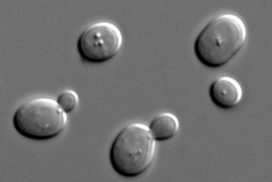
Gout, a Not so Non-Infectious Disease
First section added! 130+ references to the scientific literature. Elevated serum uric acid alone has surprisingly never been proven to cause gout. Mycotoxins, a class of fungal secondary metabolites might be the missing piece of the puzzle ...
Read More
Read More
